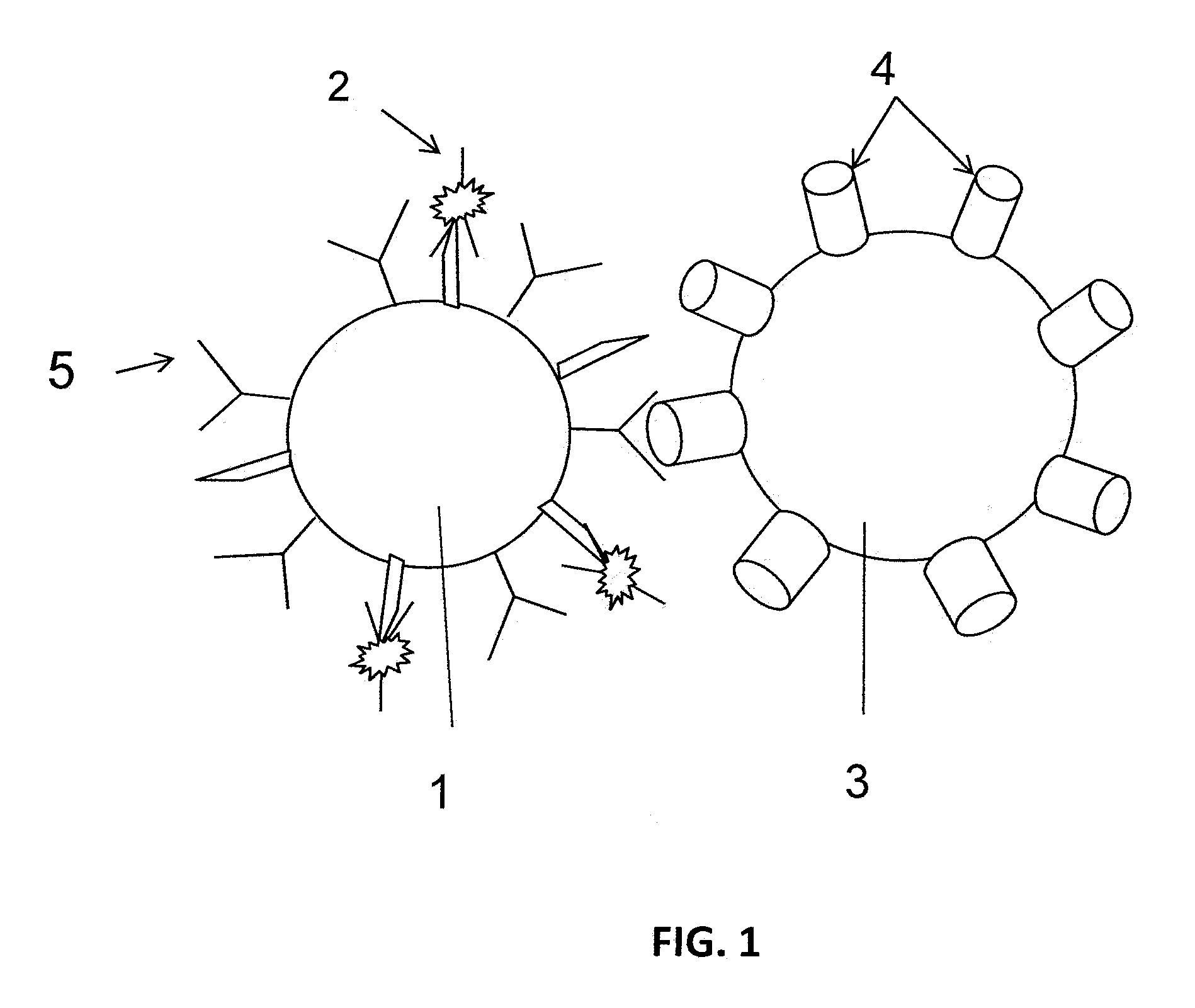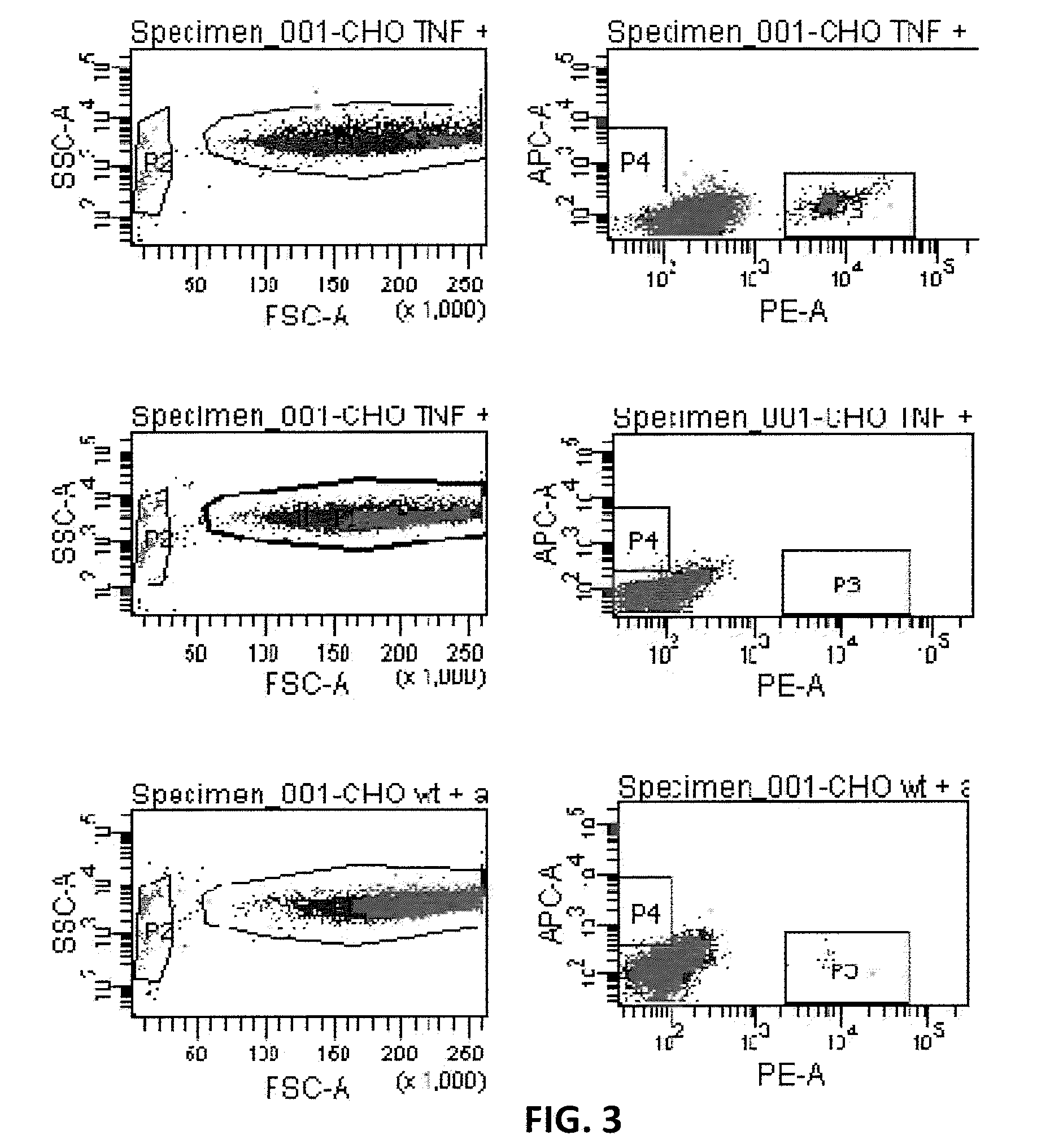Methods for identifying immunobinders of cell-surface antigens
a cell surface antigen and immunobinder technology, applied in the field of cell surface antigen immunobinder identification methods, can solve the problems of insufficient screening method capable of detecting and enriching high affinity antibodies, failure of antibody preparation or screening, and burden of sequential screening procedures, so as to achieve rapid and efficient identification of immunobinders
- Summary
- Abstract
- Description
- Claims
- Application Information
AI Technical Summary
Benefits of technology
Problems solved by technology
Method used
Image
Examples
example 1
B Cell Screening System Using Soluble Antigens
[0124]A FACS (fluorescence-activated cell sorting)-based screening system described in this invention is exemplified here capable of selecting B cells that bind to a target of interest, specifically, a soluble protein, via their B cell receptors (BCR). In this Example, the target was the single-chain anti-VEGF antibody ESBA903 labeled with a fluorescent dye (PE and PerCP). Lymphocyte suspension was prepared from the spleen of rabbits immunized with the recombinant target. Cells were then incubated with PE and PerCP labeled scFv as well as with antibodies specific for IgG (APC-labeled) or IgM (FITC labeled). ESBA903-positive B-cells that express IgG but not IgM on their surface were sorted and selected in 96-well plates (FIG. 2). As shown in panel A of FIG. 2, lymphocytes were gated according to forward and side scatter. Among them, IgG+ IgM− cells (probably memory B cells) were selected (panel B). Cells double-stained with scFv-PE and sc...
example 2
Detection of the Interaction Between Beads Coated with Anti-TNFα Antibody and CHO Cells Expressing Membrane-Bound TNFα
[0135]Before a B cell screening against a transmembrane protein is initiated, it has to be demonstrated that cell-cell interactions (and especially interactions between BCR and transmembrane protein on target cell) can be positively selected with a FACS. To determine whether the high pressure in the flow-cytometry stream breaks non covalent binding between two cells, the following experiment was performed.
[0136]CHO cells stably transfected with membrane-bound TNFα (B-220 cells) (containing a mutant membrane-bound TNFα that contains a point mutation in the TACE cleavage site that prevents cleavage and shedding of TNFα ligand; see, for example, Scallon et al. J Pharmacol Exp Ther 2002; 301:418-26) were incubated with beads coated with a PE-labeled anti-TNFα antibody. In this set-up the beads mimic memory B cells. As negative controls, non-transfected CHO cells were use...
example 3
Detection of the Interaction Between B Cell Isolated from an Anti-TNFα Antibody Immunized Rabbit and CHO Cells Expressing Membrane-Bound TNFα which were Saturated with Anti-TNFα Antibody
[0142]For the experiment depicted in FIG. 5, lymphocytes were isolated either from an anti-TNFα antibody (ESBA105, produced in-house) immunized rabbit spleen or from a non-immunized rabbit spleen. They were stained with anti-rabbit IgG-APC and anti-rabbit IgM-FITC (AbD serotec) and subsequently pre-sorted in order to obtain pure populations of memory B cells (IgG+ / IgM−). In parallel, TNFα-expressing CHO cells (donated by Dr. P Scheurich, Univ. of Stuttgart) were loaded with 1 ug / mL calcein-red (Invitrogen), a cytoplasmic dye that fluorescently stains living cells. These cells were then washed once and incubated with (or without, for the negative control) 100 ug / mL of ESBA105, and finally washed again 3× with PBS. Memory B cells were finally mixed at a ratio of about 1:10 with the CHO cells and incuba...
PUM
| Property | Measurement | Unit |
|---|---|---|
| dissociation equilibrium constant | aaaaa | aaaaa |
| dissociation equilibrium constant | aaaaa | aaaaa |
| dissociation equilibrium constant | aaaaa | aaaaa |
Abstract
Description
Claims
Application Information
 Login to View More
Login to View More - R&D
- Intellectual Property
- Life Sciences
- Materials
- Tech Scout
- Unparalleled Data Quality
- Higher Quality Content
- 60% Fewer Hallucinations
Browse by: Latest US Patents, China's latest patents, Technical Efficacy Thesaurus, Application Domain, Technology Topic, Popular Technical Reports.
© 2025 PatSnap. All rights reserved.Legal|Privacy policy|Modern Slavery Act Transparency Statement|Sitemap|About US| Contact US: help@patsnap.com



